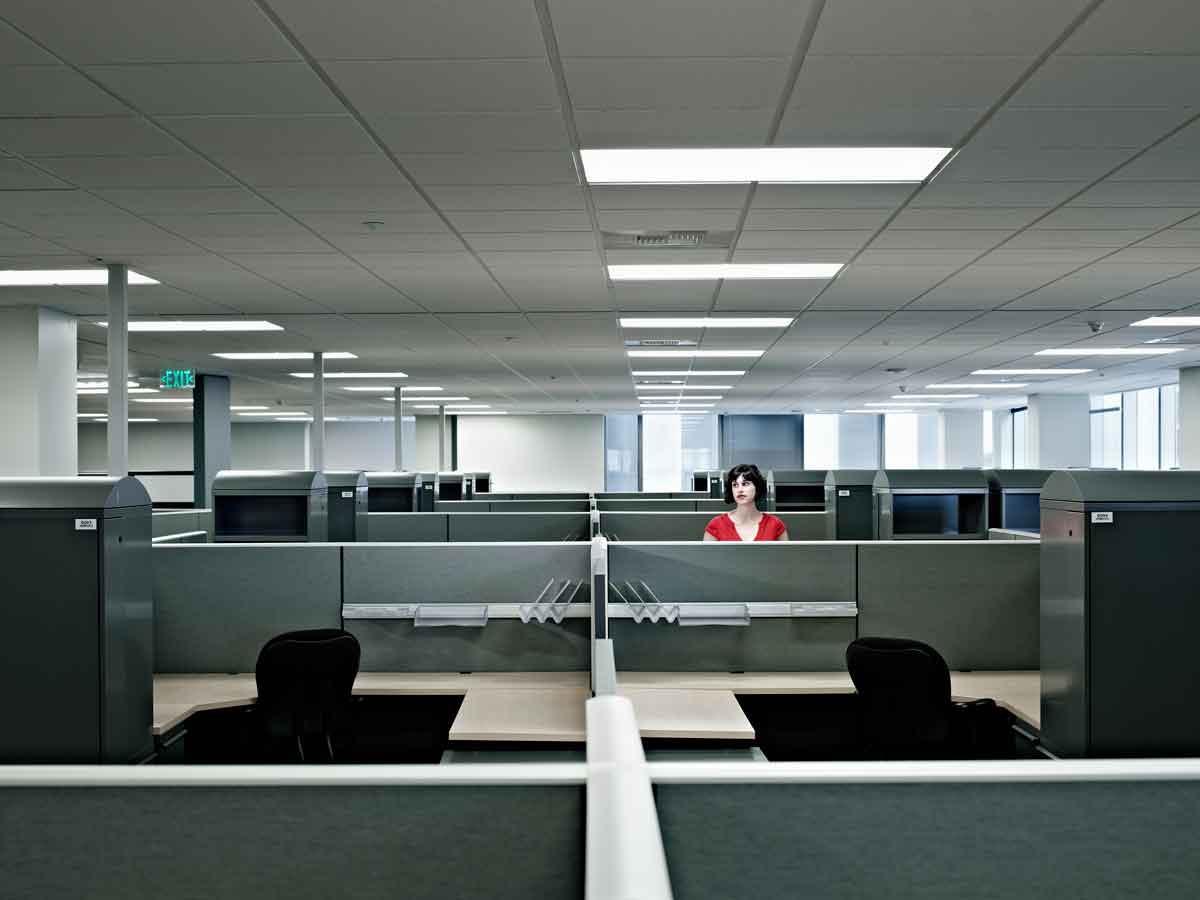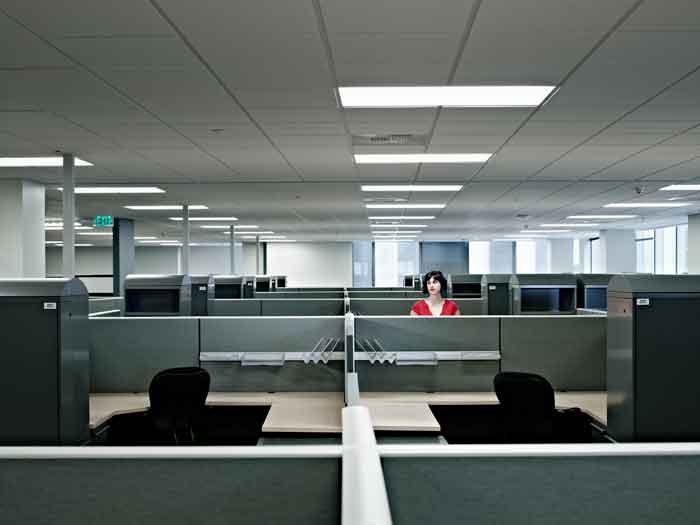
After COVID-19: What will tomorrow’s offices look like?
 Companies will have to rethink shifts and consider variable or staggered schedules to reduce the number of employees on the premises at the same time (Getty Images/Thomas Barwick)
Companies will have to rethink shifts and consider variable or staggered schedules to reduce the number of employees on the premises at the same time (Getty Images/Thomas Barwick)
The impact COVID19 will have on office life is inevitable, particularly in the short and medium terms. Employers and employees will have to embrace the new reality of disinfection, ventilation and social distancing.
“Employers have a responsibility to their employees to protect them—including from each other,” says Philippe Lupien, an architect and professor of environmental design at Université du Québec à Montréal. “What we don’t want is an office where everyone gets sick at the same time.”
Here’s what employers will have to consider before reopening their doors:
1) HOW TO LIMIT THE RISK OF TRANSMISSION
“The information we have on the virus is not yet sufficient to establish a universal office layout policy,” explains Lupien. “However, we know COVID-19 is transmitted when an infected person talks, coughs or sneezes and, in doing so, projects droplets (up to one metre away) that fall onto horizontal or vertical surfaces, which is why masks are worn.”
There’s a lot of concern about projected droplets, adds Diane-Gabrielle Tremblay, a professor at the School of Business Administration at Université TÉLUQ. “In recent years, in order to save space and money, there was a big shift toward open-plan offices, which are supposed to drive collaboration. Today, those spaces can be scary,” she says. “We’re nowhere near the two metres required in some cases.”
As a result, she says, some companies will have to install Plexiglas partitions that completely surround workstations and require masks to be worn. They’ll also need to rethink shifts and consider variable or staggered schedules to reduce the number of employees on the premises at the same time and, in turn, the risk of transmission. Public transit and elevators will also have occupancy restrictions.
Depending on human traffic flows, other measures may be added, such as one-way hallways (with traffic flowing clockwise) to limit encounters, or enhanced signage (such as “Do not cross this line”). New apps to help keep a safe space from others have already emerged. For example, SD Tech, a geolocation company, has launched “The Social Distancer,” a wearable electronic device that sounds an alert when the required distance is not maintained.
2) FREQUENT DISINFECTION OF COMMONLY USED AREAS
Businesses where desks may be used by more than one person are faced with another challenge, adds Tremblay.
“In some cases, there are only enough [workstations] for about 50 per cent or 75 per cent [of employees],” she says. “The others set up shop in the relaxation areas, in the cafeteria, in meeting rooms … But who’ll want to do that going forward? In all cases, those areas will have to be disinfected after each use.”
Lupien is even more specific: “All horizontal surfaces are to be disinfected and should be kept as uncluttered as possible for easier maintenance. Vertical surfaces, such as screens, must also be disinfected.”
Common areas should eliminate non-essential items (for example, magazines, newspapers and so on) and high-touch surfaces—such as door handles, elevator buttons and cabinet handles—will need to be cleaned at least twice a day. In dining areas, counters, tables, refrigerator handles, faucets, chair backs, microwaves and so on will have to be sanitized before and after each use, and disinfected daily.
Other obvious measures include handwashing, respiratory etiquette and the disinfecting of tools, materials and equipment, as well as the exclusion of symptomatic individuals. One thing is for certain, says Tremblay: the law is clear. “Employers have a legal obligation to ensure the health and safety of their employees in the workplace. And we’re talking about a situation that could last 18, 24 months … or even longer.”
3) MAINTAINING ADEQUATE VENTILATION
Lupien sees another threat with employees returning to the workplace.
“According to the most recent studies, the microdroplets we project remain airborne and even move around in air streams,” he says. “They’re called Flügge droplets, after the German researcher who studied this method of transmission as early as the 19th-century. If their viral load is high enough, can they infect a healthy person?”
Two cases recently caught the architect’s attention: a call centre in Seoul, South Korea, and a restaurant in Guangzhou, China. The virus allegedly spread through the air in those locations.
His advice? Before bringing employees back to the office, “you have to look at every work area, including closed offices, and see what ventilation system is being used. This could mean bringing in an architect or engineer, if the floor plans are unavailable or if you have doubts, because no two buildings are the same.”
“The best and most environmentally friendly system today,” he says, “is one in which the air from a radiant floor captures the heat emitted by appliances, equipment and employees and is then expelled through the ceiling. It’s the most comfortable model and promotes productivity, too.”
4) PROTECTING HIGH-RISK EMPLOYEES
Employees over 60 years of age or in fragile health should stay home, says Lupien, particularly since there is still doubt around whether infected individuals develop some form of immunity. If they absolutely must return to the workplace, he adds, their seating area should be carefully considered.
“It would be wise to put them near the air intakes, definitely not near the outlets,” says Lupien. “We can also ensure that they are placed near a window that opens, where possible, provided there is negative pressure and that fresh air flows into the room, rather than indoor air flowing out. They must not end up in a contaminated air stream.”
It’s also necessary to pay attention to people who speak loudly or a lot, making sure to maintain a safe distance or install partitions that will prevent transmission. Recent research conducted by the United States’ National Institutes of Health found that a single minute of loud talking generates more than 1,000 virus-containing droplets, which can stay airborne for as long as 14 minutes.
Although the study did not account for the types of air circulation and temperature changes, the researchers also found some speakers produce a much larger number of droplets—more than 100,000—per minute of speaking.
5) IMPROVING THE REMOTE WORKFORCE CULTURE
According to Tremblay, managers who were not in favour of remote working will have to accept this culture change. “They are now are forced to admit that productivity—both in terms of quantity and quality—has not suffered. They have to learn to manage employees remotely, rather than on-site as they did before.”
Part of this new norm will be adapting structural goals and making clearer requests, particularly with regard to expected performance, she says. Employees will also have to ask for more guidance to avoid being reprimanded later. In light of the current environment, “it’s only natural to rein in expectations a little bit, particularly for parents with very young kids or a child with a disability,” says Tremblay.
“It’s up to managers to motivate their teams,” says Tremblay. “Some remote workers feel isolated at times or overwhelmed. This is where video meetings, in small groups, for example, can give everyone a chance to express themselves.” Some companies may choose to hold occasional face-to-face meetings at the office. Others may allow their employees to come into the office more often if they prefer or work in a co-working space near home where they’ll have access to all the usual equipment (printer, photocopier, and so on).
With so many considerations to make, a gradual return scenario is crucial, adds Lupien. “Despite all these [safety] measures and although things can be accomplished by working remotely, accountants, like lawyers and architects, will always need human contact,” he says. “That physical presence is one of the key factors for maintaining trust.”
MAKE THE MOST OF WORKING REMOTELY
Find out how to stay productive, even with the kids at home. Keep your boundaries, carve out a schedule and learn how to lead a remote team. Plus, follow the right etiquette and best practices for using remote tools such as Zoom.